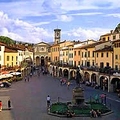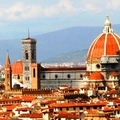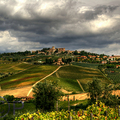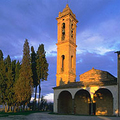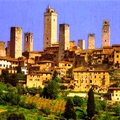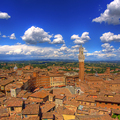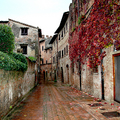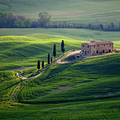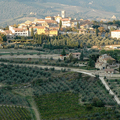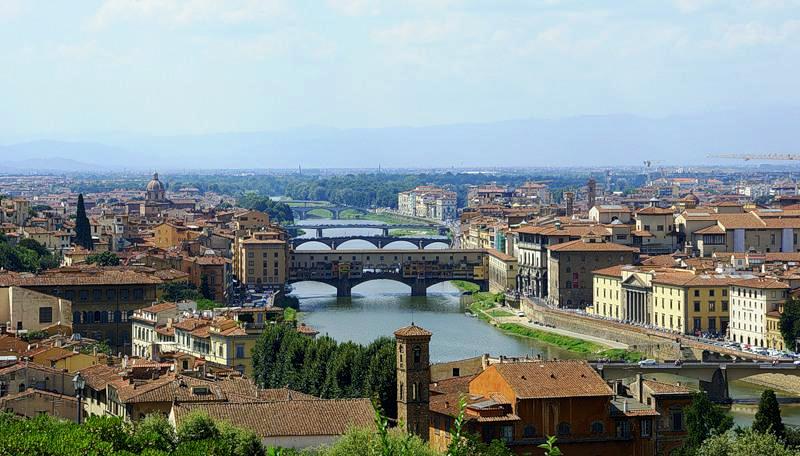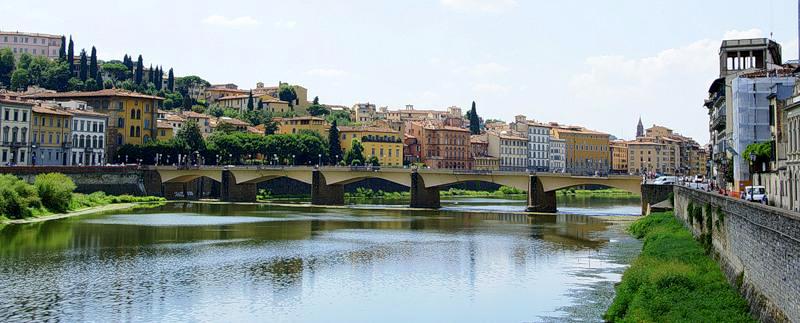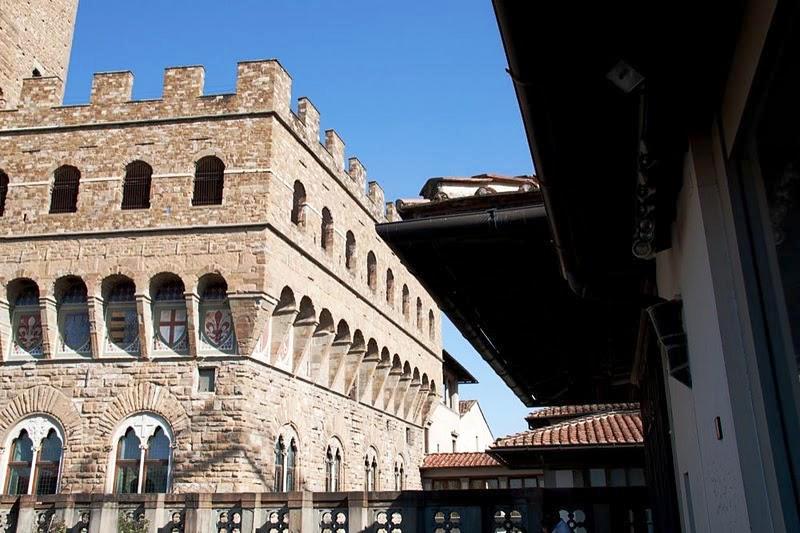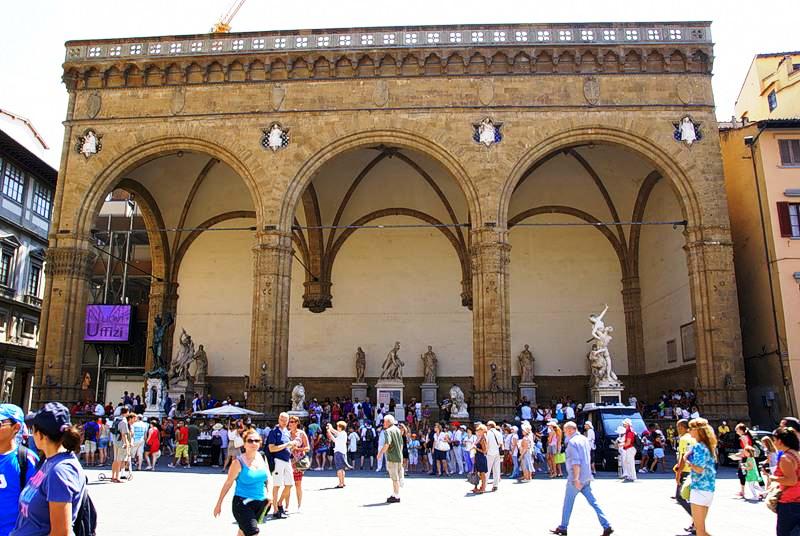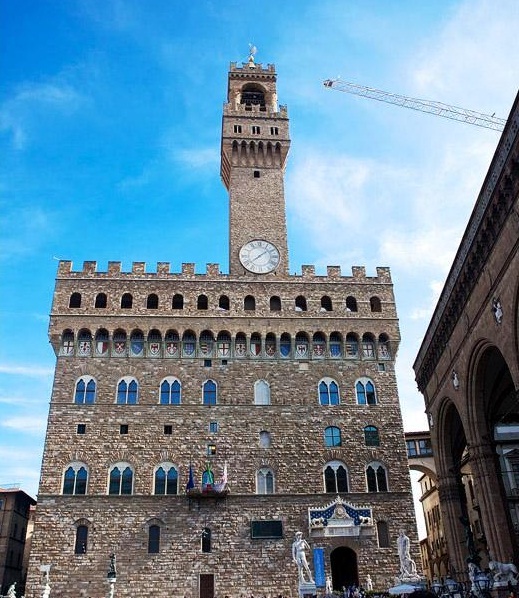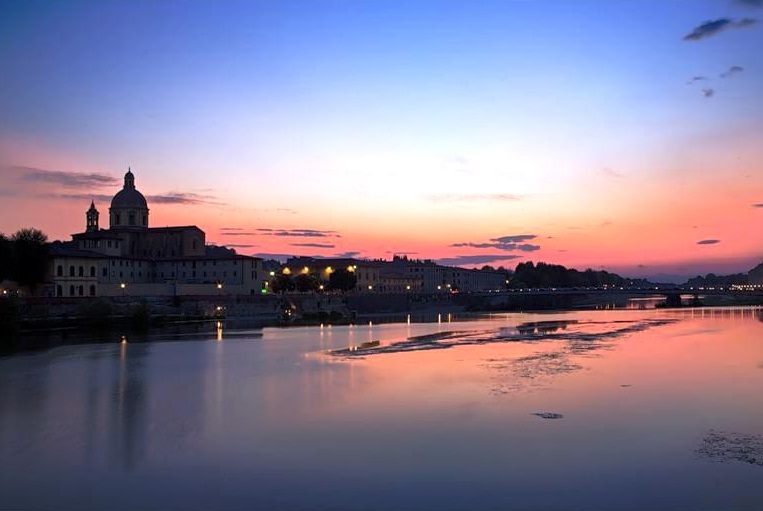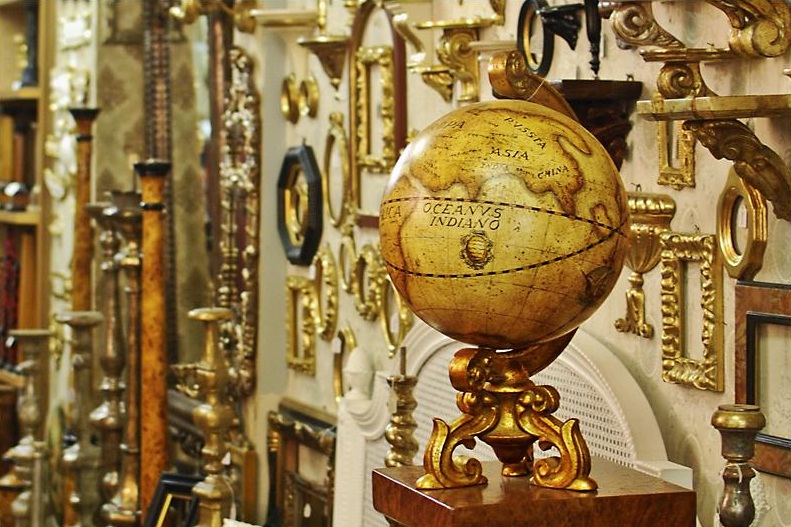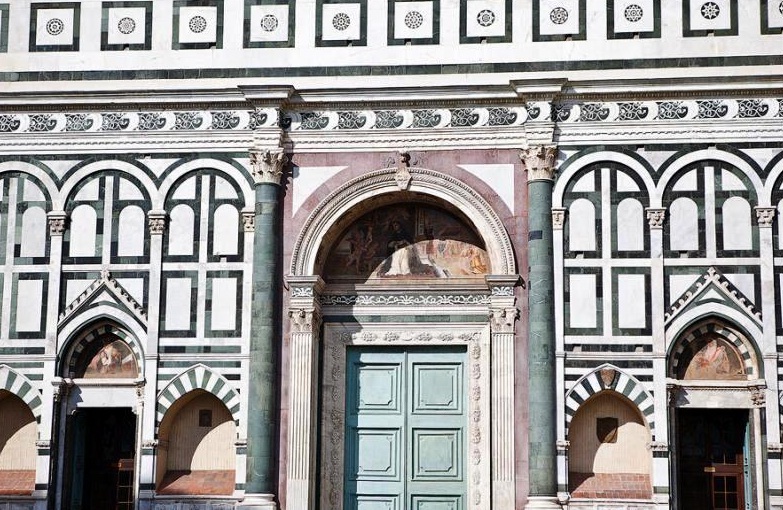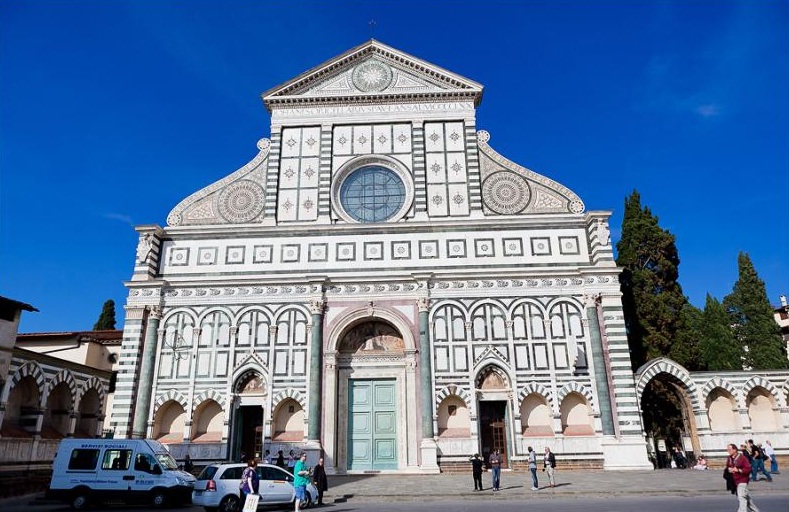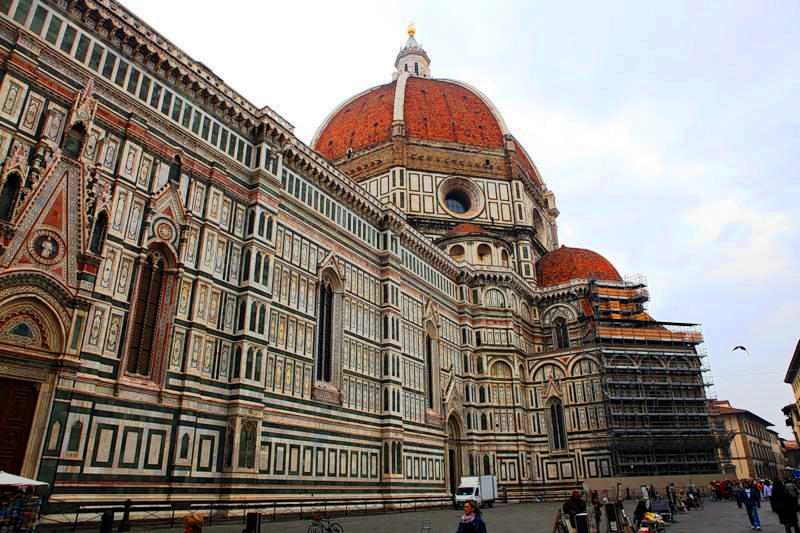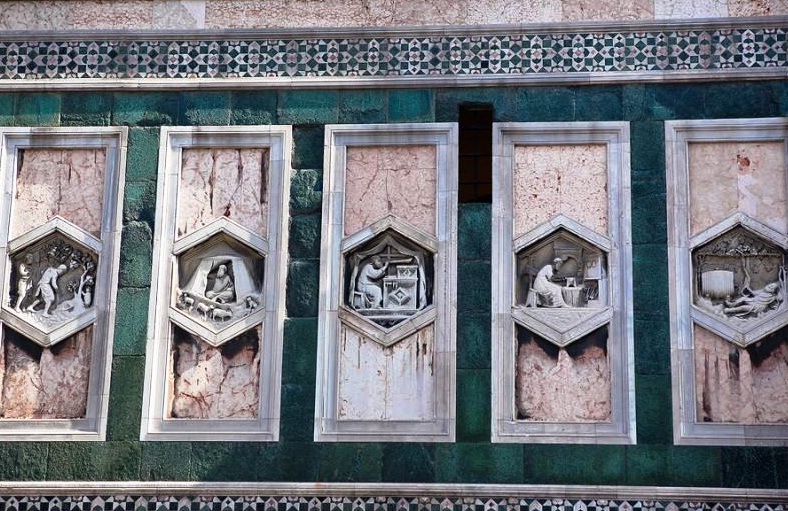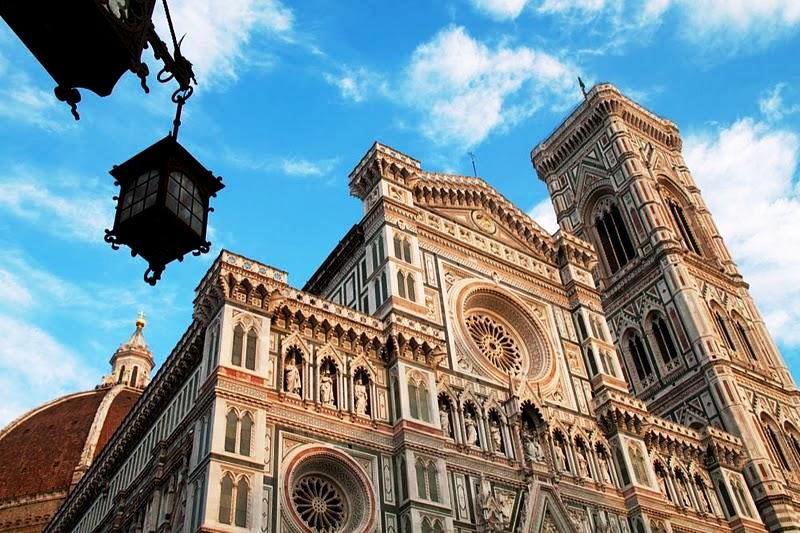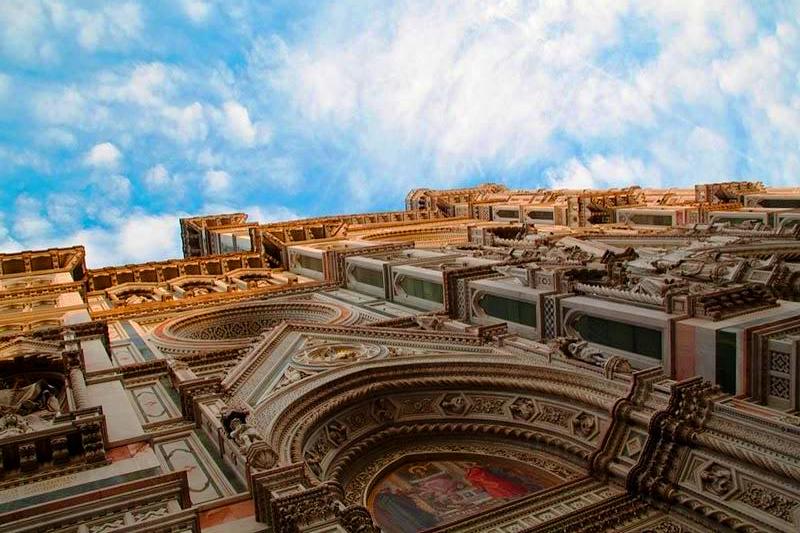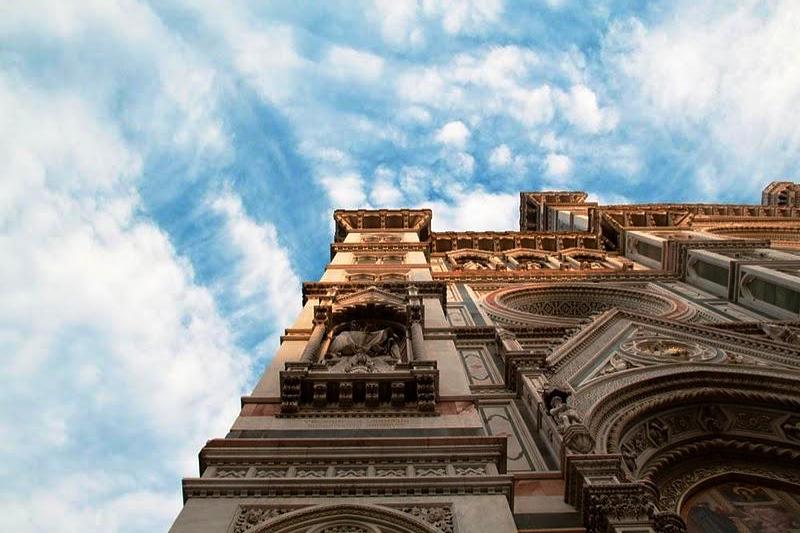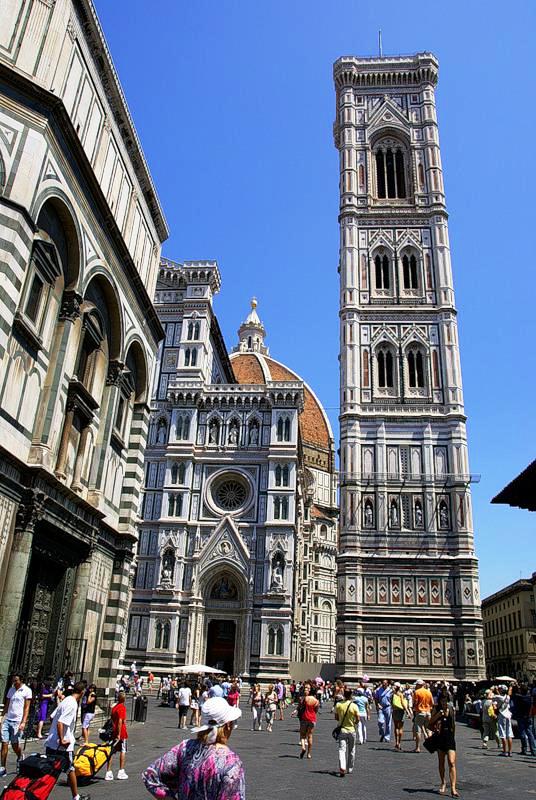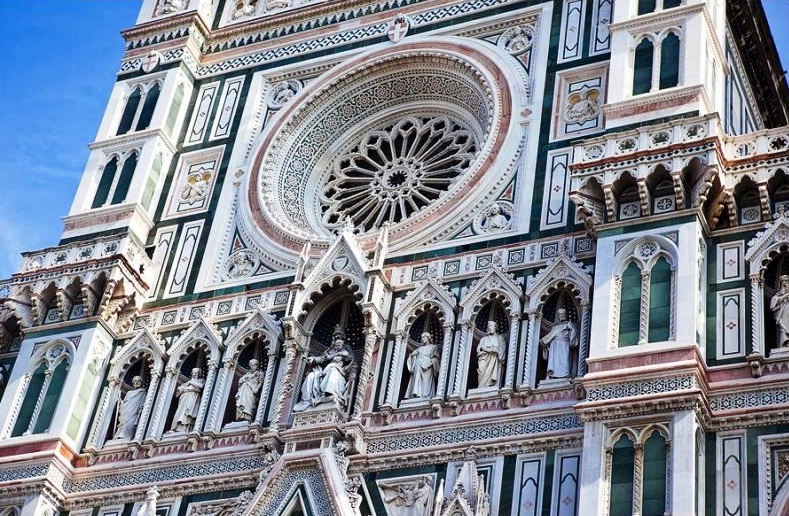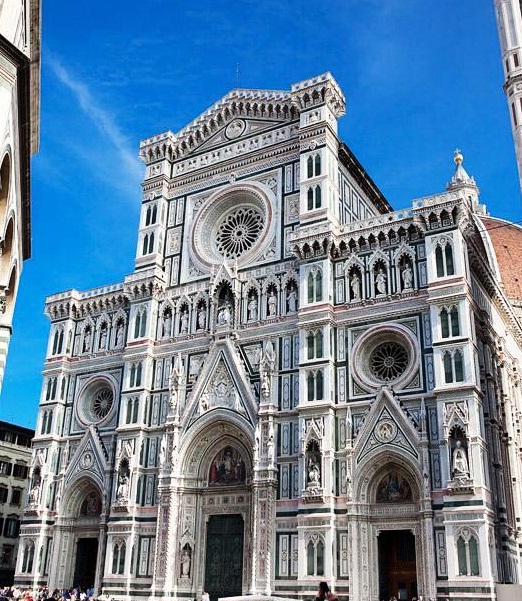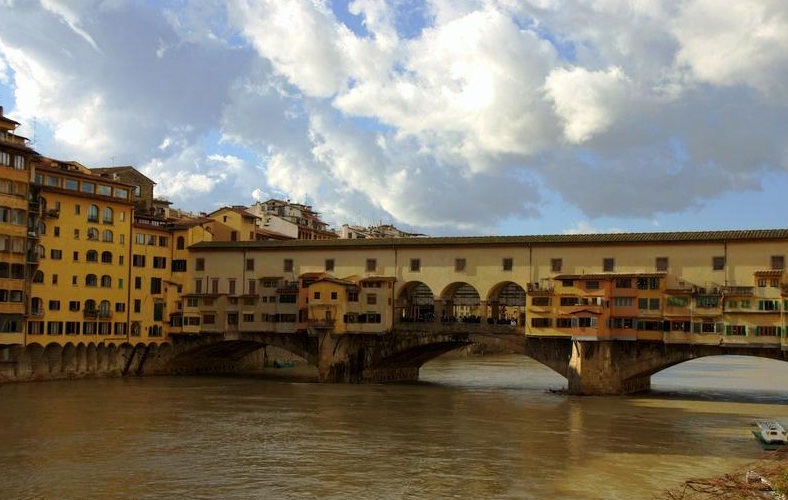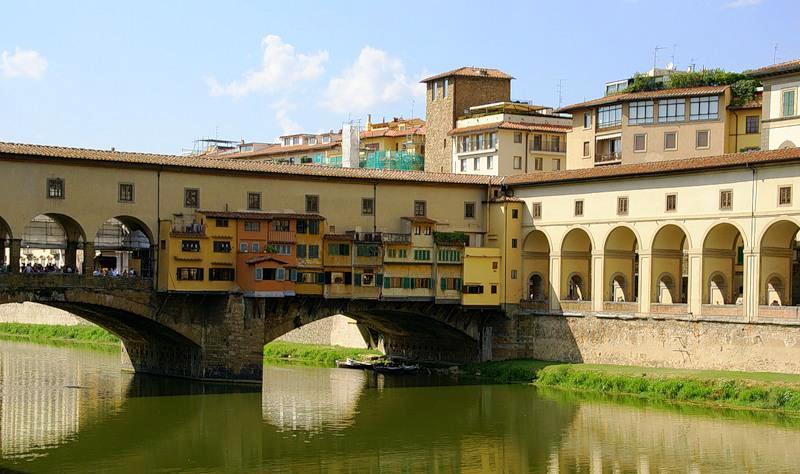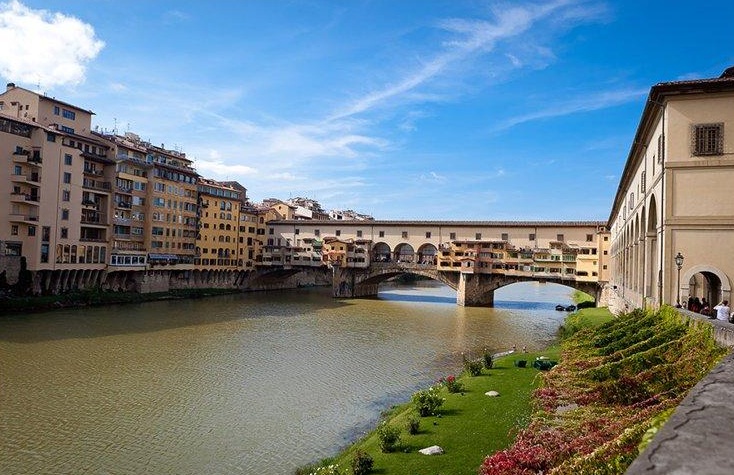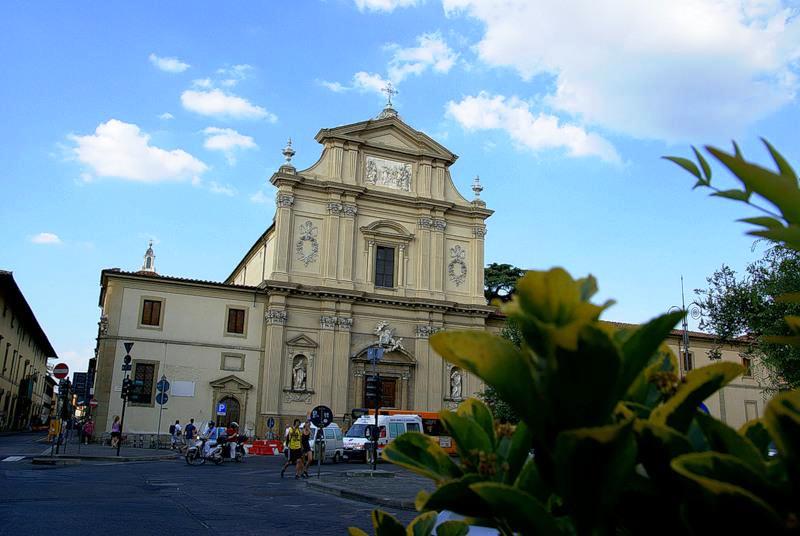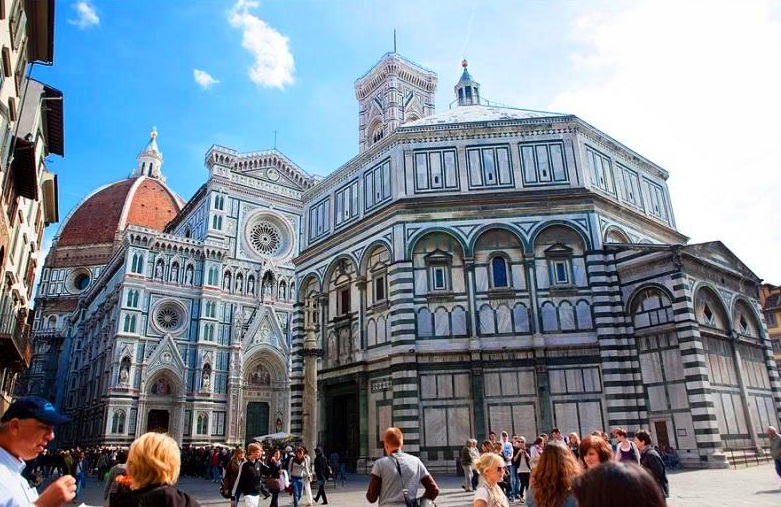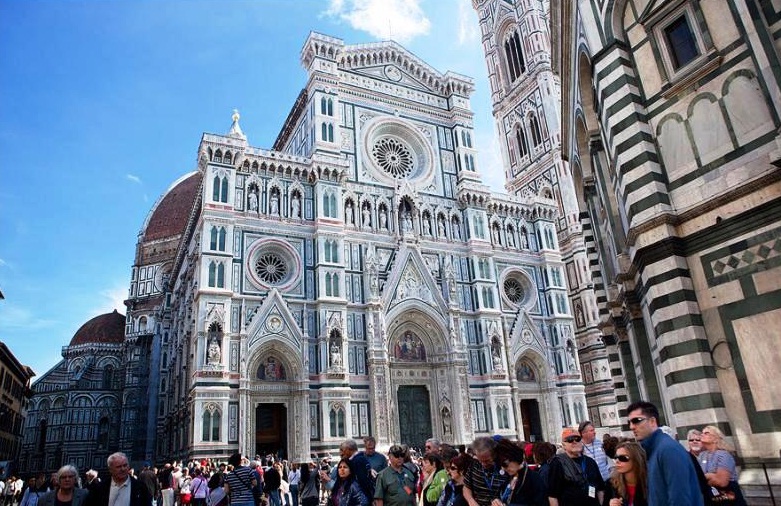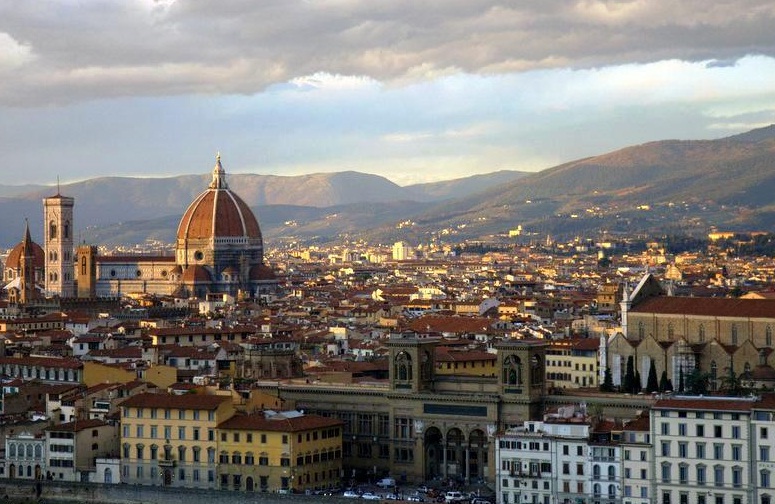Destinations / The most beautiful places to visit in Chianti area, Italy / Florence
Ads
Florence
Sponsored Links
About Florence
The capital of Tuscany, Florence, is one of the most beautiful places in this Italian region. Culture, art, history, cuisine, fashion and shopping, all bring their contribution to the charm of this ancient town. Michelangelo, Renaissance, art and architecture, leather coats, gold, Chianti wine are among the numerous things that can be found here.
The city of Florence, or Firenze as the locals call it, is located in the north of Italy. Taking into consideration its cultural importance, Florence is often referred to as the "Athens of Italy". And no wonder, given the multitude of medieval edifices, monuments and art works of the Renaissance. Once the capital of the Kingdom of Italy in 1865-1870, Florence is considered the jewel of Tuscany. It is also one of the most visited cities in the Apennine peninsula. Millions of art lovers come here every year and enjoy the history revealed in every corner of the street. The destination is even more valuable as the past reflected in the abundance of religious and civil buildings go hand in hand with the most modern services. The city of lilies, the cradle of the Renaissance, Florence has changed much the way we view the world through the spread of neoclassical architecture in the architecture of the great capitals of the world. Discovered in 1700, it soon became a Mecca for travelers, especially for the romantics, who were inspired by the elegant palaces and the artistic wealth.
Major sights to visit in Florence
There are many places to visit, admire and contemplate in Florence. The most important tourist attractions of Florence are located in the center, at short distances from each other. In fact, the entire central area of the town is part of the UNESCO world heritage. In particular, the most important tourist attractions are the Piazza del Duomo, Cathedral of Santa Maria dei Fiori, Baptistery, Campanile and the Cathedral Museum. For an overview of the city you have several options. You can start your itinerary with Piazzale Michaelangelo, in the southern part of the old center. Here you can enjoy great views over the Arno River and Duomo. You can do a little effort and climb the stairs that lead to the church of San Miniato al Monte and the artwork dating from the 11th century. Lose yourself in the Boboli Gardens on the rear part of the Pitti Palace. Among the lush greenery, you can admire an excellent panorama over Florence. You can take a rest at the cafe on the top of the hill and enjoy the serenity of the place. Further on, one ought to reach the Duomo. Even if you climb the 463 steps which can get you little exhausted, once you are on the top view you will get to feel the true grandeur of the building. Also, a stroll along the Arno river offers views that will remain forever in your memory, as the panorama remained almost unchanged, as it was 700 years ago.
Among all piazzale in Florence, Piazza del Duomo presents an unequaled interest, being situated right in the historical center of Florence, in a privileged position. It boasts a series of attractions of great historical, religious, architectural, artistic and cultural importance, among which the Cathedral of Santa Maria dei Fiori, Battistero di San Giovanni, Campanile, the Cathedral Museum (Museo dell'Opera del Duomo) as well as the Loggia del Bigallo. Other great attractions, although not as famous as the above mentioned ones, are the Palazzo dei Canonici, Palazzo Archivescovile, Palazzo Strozzi di Mantova, Torre dei Marignolli, Opera di San Giovanni and Venerable Arciconfraternita della Misericordia among others.
The Cathedral of Santa Maria dei Fiori (Il Duomo) is the edifice that dominates, both in terms of dimensions and importance the other parts of the Piazza del Duomo. Along with Campanile and Baptistery it is declared a UNESCO site. The Duomo of Florence is one of the "three great monuments" of Italy, together with the Leaning Tower of Pisa and the Colosseum in Rome. Its construction lasted for almost 150 years and the structure features a neo-Gothic style. The cathedral was designed by Arnolfo di Cambio in 1296 to be the largest Roman Catholic church in Europe. The Santa Maria dei Fiori was actually built around Santa Maria Reparata, the latter being completely demolished only 70 years after the construction began. However, it was in 1436 that the construction was completed under the supervision of Filippo Brunelleschi. Throughout this period, other great architects such as Giotto, Andrea Pisano, Francesco Talenti and Giovanni Ghini contributed to build this monumental construction. The construction and the decoration of the cathedral was sustained by some of the most outstanding Renaissance artists, among which Michelangelo, Donatello, Ghirlandaio, Nanni di Banco, Lorenzo D'Ambrogio, Niccolo Lamberti, Giorgio Vasari and Luca della Robbia. At the time of completion, it was the largest cathedral in Europe, with a capacity of over 30,000 people.That building has been the largest cathedral in the world up until modernity. Nowadays, it is surpassed in size only by St. Peter's Basilica in Vatican. Its name, Santa Maria del Fiore, which means "Saint Mary of the Flower" in translation, refers to the lilly flower, the symbol of Florence, or to the ancient name of the city - Fiorenza. On the other hand, a document dating from the fifteenth century states that "the flower" refers to Jesus Christ. The Duomo of the cathedral is an exceptional construction with the diameter of 42 meters. It was the first octagonal dome in history, erected without a wooden scaffold structure, and the largest dome built so far (it is still the largest brick dome in the world). The exterior made of polychrome marble panels dates from the nineteenth century. Truly impressive is the abundance of the polychrome decorations, an effect created by the combination of colors, materials and sculptural motifs, as well as the various religious scenes that embellish the facade, rosary, tambourines and columns.
Nearby the entrance, on one side and another, there are the monuments of the four artists who participated in the construction of the cathedral: Brunelleschi and Giotto to the right, Arnolfo di Cambio and Emilio de Fabris to the left. Unlike the exterior, the interior will impress the visitor with its rare decorations; there can be distinguished some valuable masterpieces such as the statues of the apostles, a fresco by Giotto in the southern apse, stained glass windows designed by Ghiberti in the northern apse. Of great interest is the orologium, located on the inside of the façade. Further, a few steps lead to the basement, where one can see the ruins of the old church originally found on this site, dating from the fourth century. The dome attributed to Brunelleschi is a work of art itself. You can climb to the top following 450 steps, so that you can take a close view of the fresco by Vasari and stained glass made by Donatello and Uccello. In a niche in the left transept, one of the four Pietà by Michelangelo can be found, yet the original is preserved in the Duomo Museum, the cathedral featuring a copy of it now.
Another major construction is the Baptistery of St. John (Battistero di San Giovanni), of octagonal shape, built in the eleventh century in Roman-Florentine style, located in front of the cathedral. Usually referred to as the small basilica of Florence, the Baptistery is one of the oldest buildings in the capital of Tuscany, presumably built on the site of a former Roman temple dedicated to Mars. Up until today, there is no specific reference to the architect who designed the structure, although Andrea Pisano, Giotto Giovan Rustici, Andrea Sansovino, Ghiberti and Vincenzo Danti, along with Donatello and Michelozzo are acnowledged to have contributed to the completion of the building. It is assumed that Leonardo da Vinci also contributed to the artistic value of the Baptistery, even if not directly and solely as a supervisor. In the eleventh century, for a few decades, until the construction of the old basilica that used to stand on the site of Santa Maria del Fiore has been completed, the building itself was the cathedral of Florence. After that, the edifice served only for baptism ceremonies. Here, the Florentine poet, Dante Alighieri, was baptized, among many others. The construction impresses by the harmonious combination of different types of marble: white Carrara, green marble of Prato, Red Marble of Maremma. Unlike the outer structure of the Baptistery rich in decorations, the interior of the building is rather poor, although it houses a few masterpieces that offer the place a great artistic value. The Baptistery features one of the largest and most splendid mosaics of Western art, which contradicts the general shape and the atmosphere of the interior, a few artists working on it throughout the time (Jacopo da Torrita, Gaddo Gaddi, Cimabue, Andrea di Riccio). The architectural value has been acknowledged by both Dante and Michelangelo. However, the artistic value of the building lies in the gates of the Baptistery. These portals boast amazingly ingenious bronze reliefs and enhance the importance of the Baptistery, although they have been added about two centuries ago after the construction of the building was completed.
Campanila which is located in the proximity of the Cathedral of Santa Maria dei Fiori is another attraction that increases the architectural and tourist importance of Piazza del Duomo. It was designed by Gioto, square-shaped, about 85 m high, built in Gothic style and finely decorated with statues and panels, carved reliefs on the lower part by Donatello (copies, as the originals are preserved in the Duomo Museum). The major elements of Campanila include the hexagonal outer panels on the first level, which represent various allegories and biblical scenes, most of which were created by Andrea Pisano, while the rest are attributed to Nino Pisano and respectively, Luca della Robbia. Diamond-shaped panels are also attributed to Andrea Pisano, although Maso di Banco, Nino Pisano and Micheli de Castello have created some of them too. Campanile niches are populated by sculptural works, sculptures and reliefs both attributed to Andrea Pisano, Maso di Banco, Donatello and Nanni di Bartolo.
Besides these great historical monuments, in Florence are more than 30 museums and galleries, of which some of the most important ones are the Uffizi Gallery, the Bargello National Museum, the Academy of Fine Arts and the House of Dante. Among art palaces, make sure not to miss the Palazzo Pitti and the nearby Boboli Gardens, Palazzo Vecchio, Palazzo Strozzi and Palazzo Corsini. Furthermore, Piazza della Signoria together with Piazzale Michelangelo should not be avoided during your journey here. Among the religious edifices, which count not less than 40, the Basilica of Santa Maria Novella, All Saints Church are worth a visit too. Although you will encounter many copies of Florence's famous statue "David" by Michelangelo on the streets, you should know that the original art work is exhibited in the Academia di Belle Arti. Here you can also find a small collection dedicated to Michelangelo, which contains some unfinished sculptures of the great artist as well.
Another architectural symbol of Florence is the Ponte Vecchio. Crossing the Arno River , from the Palazzo Ufizzi to the Palazzo Pitti, Ponte Vecchio is famous for its jewelry shops alined on it. Originally, there were butcher’s shops here; in the 15th century, Medici family has banned the sale of meat and goldsmiths took their place. Most of these are family businesses handed down from generation to generation.
A great tourist attraction in Florence is Palazzo Vecchio, which is the town hall of Florence nowadays, one of the most impressive town halls of the entire area of Tuscany. Worth mentioning here are “Salone dei Cinquecento”, 54 m long and 23 wide, built in the late fifteenth century as the seat of the Grand Council, which had 500 members which can be considered, as a whole, a work of art. The walls are embellished with huge frescoes, depicting the Florentine republic's military successes against Pisa and Siena. The ceiling is made of 39 panels painted by Vasari, representing specific moments from the life of Cosimo I, the most important one being that of its glorification as the grand duke of Florence and Tuscany; Sala dell'Udienza Hall, which features, among other beautiful works of art, the marble statuary group “Il Genio della Vittoria”, Michelangelo's work, and Sala delle mappe geografiche, with "Il mappa mundi” in the centre.
Between Palazzo Vecchio and Loggia dei Lanzi there is located Galleria degli Uffizi, one of the most famous museums in the world, which houses works of art by famous artists such as Giotto, Piero della Francesca, Fra Angelico, Botticelli, Correggio, Leonardo da Vinci, Raphael, Michelangelo, Caravaggio, Durer, Rembrandt and Rubens. Ufizzi Gallery is one of the oldest art museums in Europe and is housed in the Uffizi Palace. It is recommended to come here early in the morning if you want to visit the gallery, because during summer you can stand in line even for five hours sometimes.
Pitti Palace, another architectural jewel of Florence, has been the residence of the Medici family and it is now home to numerous museums and exhibitions, including the Modern Art Gallery, Royal Apartments, Museum of silver, Porcelain Museum or the Museum of carriages. The garden of the palace named Boboli contains a large collection of sculptures dating from the 16th-18th century.
If you're exhausted after a full day of walking in Florence, you can buy an ice cream at Bar Vivoli (near Santa Croce, famous for the good ice cream that they sell there) and you can reach the Piazzale Michelangelo to admire the sunset over the city. Even after sundown Florence is a lively city with many clubs with live music where you can party until early in the morning.
Accommodation in Florence
Accommodation in Florence is quite expensive. Hostels have lower prices, yet none of them is located downtown. If you plan to relax more and visit less, you can accommodate yourself in one of the many hostels located on the hills surrounding Florence, among vineyards and groves with wonderful views. However, the wisest choice is to book in advance. Despite the fact that there are more than 600 hotels available, there are high chances that you will not be able to find accommodation if you come without reservation. In case you cannot find a place in Florence, you can book a room in the surrounding towns as well, such as Fiesole, Prato, which are equally delightful.
Best places to eat at and do shopping in Florence
In Florence, gourmets will have their greatest gastronomic experience ever. From the famous prosciutto crudo to Maremma steaks, from minestone to excellent chocolate and ice cream deserts, the traditional specialties and desserts of Florence will offer their best only accompanied by the wonderful wines Chianti, Brunello di Montalcino and Vino Nobile di Montepulciano. You can get the best value for money other than the historic center, where locals usually go. The highest prices are set in the proximity of Mercato di San Lorenzo, where the restaurants are specially designed to serve tourists. In order to get the best dishes, choose Santa Croce district. If you want to try the authentic taste of pizza, opt for small shops located near the Duomo. For a delicious ice cream dessert there are different stands on the street. Some connoisseurs in the area consider the florentine ice cream the best in the entire world. There are many different flavors and combinations that include all the fruits on the earth, including sparkling wine and garlic flavors. If culinary tourism is not on the list of your priorities and prefer to save money, there are numerous cafes and places where you can buy sandwiches. Pizza per kilogram is an excellent solution to combine the pleasure of the taste with doing economies. As a general rule, the closer the restaurant is to the historic center, the higher the prices are. If you want to escape the city turmoil, you can refuge yourself at a picnic on the hills of Tuscany, with a bottle of Chianti in the basket.
What concerns shopping, Ponte Vecchio and the Vasari area attract most tourists offering generous shopping stores. The main artery encompassing the latest hits in fashion is Via Tornabuoni; if you are in search for other places, you can orient yourself towards Via della Vigna Nuova, Via Roma and Piazza Strozzi.
Sponsored Links
By Maria Morari
Sponsored Links
Others The most beautiful places to visit in Chianti area, Italy .
Others from The most beautiful places to visit in Chianti area, Italy
Chianti is a picturesque area in Tuscany, Italy which is worldwide known for its red wine of the same name.
Alike the entire area of Tuscany, Chianti has it all to satisfy the visitor and make him never leave this paradise place, to be mentioned the great wine, delicious dishes, and splendid untainted nature.
Check out the best places to visit in the Chianti area!
Alike the entire area of Tuscany, Chianti has it all to satisfy the visitor and make him never leave this paradise place, to be mentioned the great wine, delicious dishes, and splendid untainted nature.
Check out the best places to visit in the Chianti area!
Images of Florence, icons, photos, figures, visions, appearances, illustrations, snapshots, captures, canvas and pictures of Florence - The most beautiful places to visit in Chianti area, Italy
Sponsored Links
Video Florence
Sponsored Links

